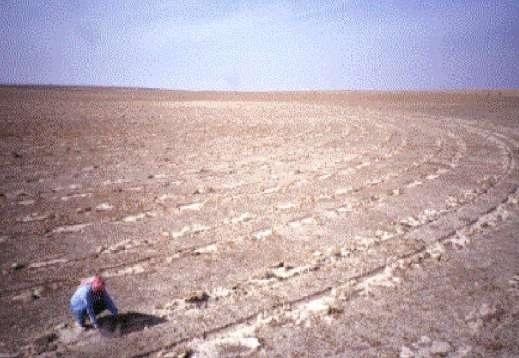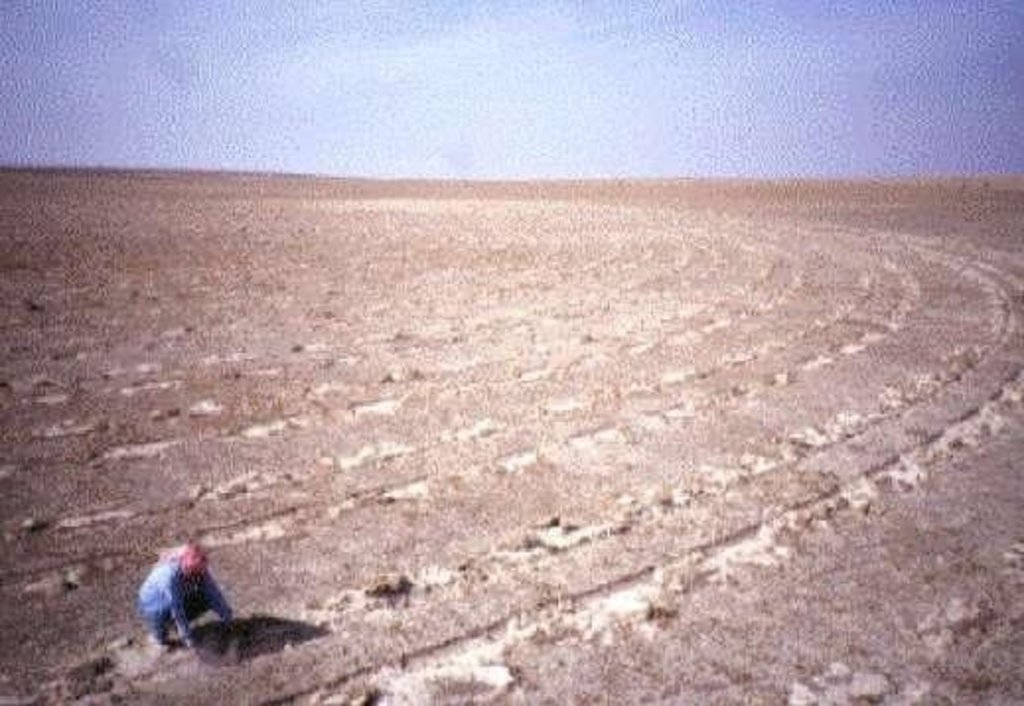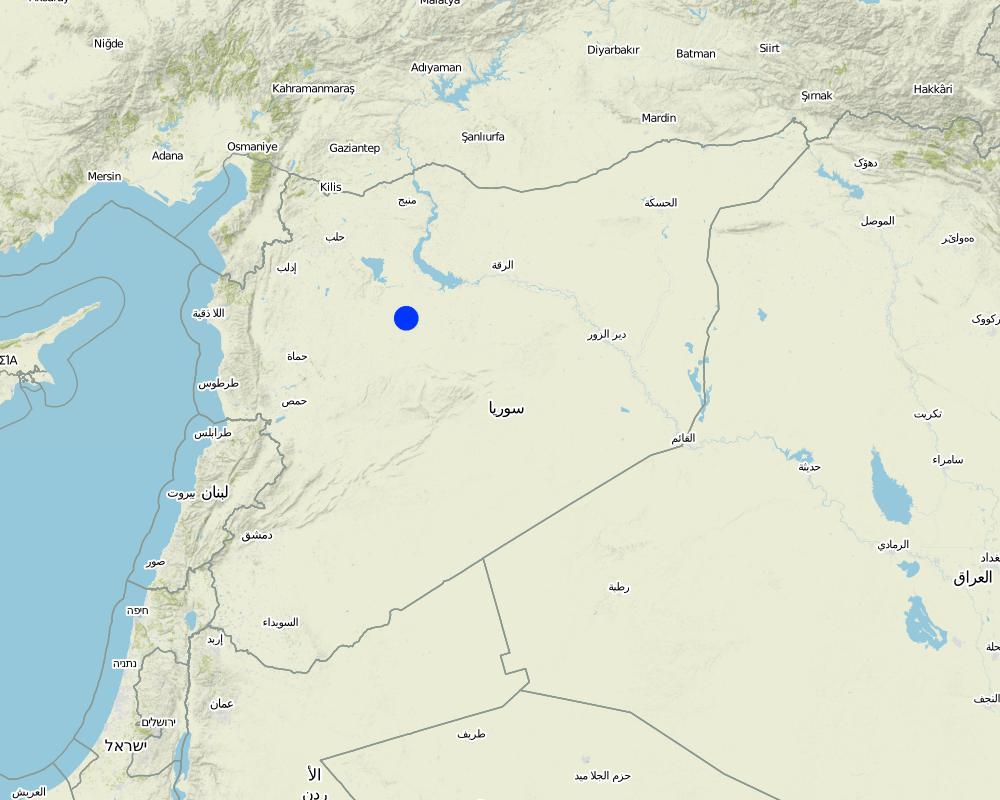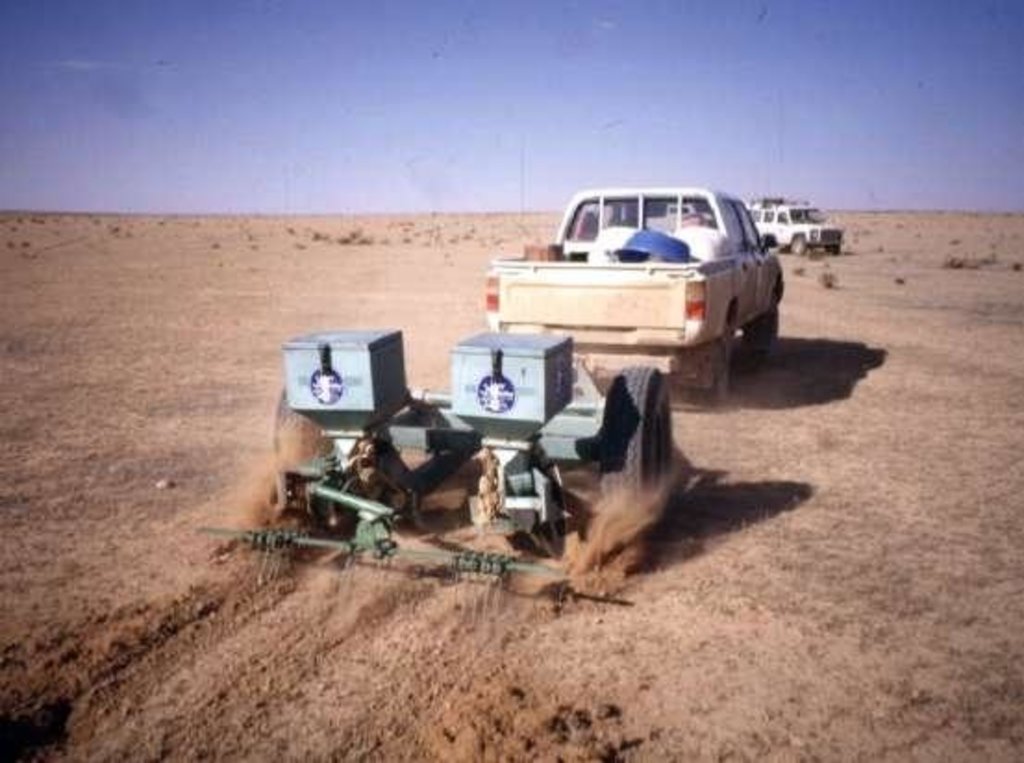Range Pitting and Reseeding [Syrie]
- Création :
- Mise à jour :
- Compilateur : Fahim Ghassali
- Rédacteur : –
- Examinateurs : Fabian Ottiger, Alexandra Gavilano
Nakr al mara
technologies_1410 - Syrie
Voir les sections
Développer tout Réduire tout1. Informations générales
1.2 Coordonnées des personnes-ressources et des institutions impliquées dans l'évaluation et la documentation de la Technologie
Spécialiste GDT:
Bathika Nabil
ICARDA
Syrie
Spécialiste GDT:
Gintzburger Gustave
Institut de Botanique -Univ. Louis Pasteur
France
Spécialiste GDT:
Hill Stephen
Australian Revegetation Corporation Ltd.
Australie
Nom du ou des institutions qui ont facilité la documentation/ l'évaluation de la Technologie (si pertinent)
International Center for Agricultural Research in the Dry Areas (ICARDA) - LibanNom du ou des institutions qui ont facilité la documentation/ l'évaluation de la Technologie (si pertinent)
Université de Strasbourg (UNISTRA) - FranceNom du ou des institutions qui ont facilité la documentation/ l'évaluation de la Technologie (si pertinent)
Australian Revegetation Corporation Ltd - Australie1.3 Conditions relatives à l'utilisation par WOCAT des données documentées
Le compilateur et la(les) personne(s) ressource(s) acceptent les conditions relatives à l'utilisation par WOCAT des données documentées:
Oui
1.5 Référence au(x) Questionnaires sur les Approches de GDT (documentées au moyen de WOCAT)
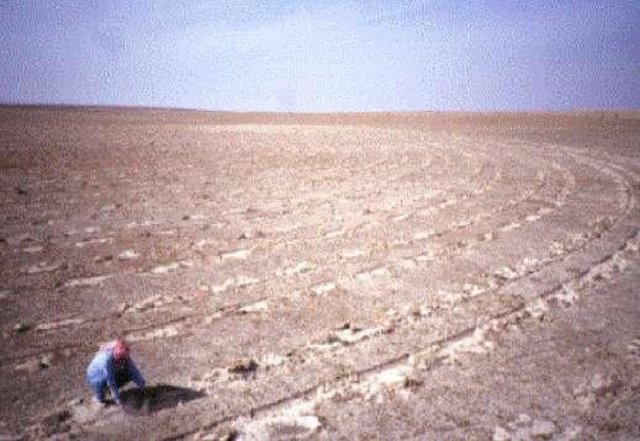
Government assisted rangeland rehabilitation [Syrie]
The rehabilitation of overgrazed and denuded rangeland with government intervention
- Compilateur : Unknown User
2. Description de la Technologie de GDT
2.2 Description détaillée de la Technologie
Description:
This technique is used to restore degraded rangelands (steppe areas) in the 150-200 mm rainfall zone in Syria. The technique is based on the pitting technique developed in Australia using the 'Camel Pitter' implement. The implement an be towed by an ordinary 2-wheel-drive pickup. Small ahallow 'pits' are scooped out by the action of inclined metal disks (similar to the disks of a disk plough). A seed hopper mounted on the top of the implement releases small quantities of range-plant seeds into the pits and an attached light harrow coveres the seeds with a thin layer of loose topsoil. The implement can also be used without the seeding device. The pits are usually made at the beginning ot just before the rainy season. In the soops made by the implement, rainwater collects and increases the soil moisture storage in and around the pits. On extremely shallow soils, pitting is not recommended because it removes the very top layer of soil and organic surface material and may expose the infertile subsoil. Seeds which emerge in the pits find favourable conditions for emergence and growth. During the early growth stages, the young plants are also sheltered by the pits from wind. The pitting machine should be pulled along the contour to optimize the capture of rainfall. Experience has shown that treating just 10-20 % of the area is sufficient to reestablish a 'starter vegetation' on completely denuded rangeland. In Syria, ARTEMISIA and SALSOLA species have been used successfully for rangeland reseeding. If used without the seeder, the pits will assist the reestablishment of the natural vegetation by providing sheltered and moist sites for seed emergence. To assure optimum reestablishment of vegetation, grazing should be controlled during the initial establishment phase.
2.3 Photos de la Technologie
2.5 Pays/ région/ lieux où la Technologie a été appliquée et qui sont couverts par cette évaluation
Pays:
Syrie
Région/ Etat/ Province:
Aleppo Province
Autres spécifications du lieu:
Obisan, Dalbouh
Commentaires:
Comments:
Total area covered by the SLM Technology is 110 km2.
The main collaborator was the Ministry of Agriculture (Steppe Directorate)
Map
×2.6 Date de mise en œuvre de la Technologie
Si l'année précise est inconnue, indiquez la date approximative: :
- il y a moins de 10 ans (récemment)
2.7 Introduction de la Technologie
Spécifiez comment la Technologie a été introduite: :
- par le biais de projets/ d'interventions extérieures
Commentaires (type de projet, etc.) :
Western Australia
3. Classification de la Technologie de GDT
3.1 Principal(aux) objectif(s) de la Technologie
- réduire, prévenir, restaurer les terres dégradées
3.2 Type(s) actuel(s) d'utilisation des terres, là où la Technologie est appliquée

Pâturages
Pâturage extensif:
- Nomadisme
Commentaires:
Major land use problems (compiler’s opinion): Overgrazing and cutting of woody shrubs for firewood. Large-scale cultivation of fodder barley (for grazing) completely removes the natural vegetation.
Major land use problems (land users’ perception): The land tenure system. Rangeland is 'public land' and control over its use is difficult to implement.
locally adapted rareseedinspecies, e.g., Atriplex halimus, Salsola vermiculata, Artemisia herba-alba
3.5 Groupe de GDT auquel appartient la Technologie
- Amélioration de la couverture végétale/ du sol
3.6 Mesures de GDT constituant la Technologie
3.7 Principaux types de dégradation des terres traités par la Technologie

érosion éolienne des sols
- Et: perte de la couche superficielle des sols (couche arable)

dégradation hydrique
- Ha: aridification
Commentaires:
Main type of degradation addressed: Et: loss of topsoil, Ha: aridification
Main causes of degradation: overgrazing (Too many animals. Grazing pressure is too high), Over-exploitation of vegetation (Too many animals. Grazing pressure is too high), Land subdivision (Land parcels for communities are limited in size)
3.8 Prévention, réduction de la dégradation ou réhabilitation des terres dégradées
Spécifiez l'objectif de la Technologie au regard de la dégradation des terres:
- prévenir la dégradation des terres
- restaurer/ réhabiliter des terres sévèrement dégradées
4. Spécifications techniques, activités, intrants et coûts de mise en œuvre
4.1 Dessin technique de la Technologie
Spécifications techniques (associées au dessin technique):
Technical knowledge required for field staff / advisors: high
Technical knowledge required for land users: low
Main technical functions: improvement of ground cover, increase / maintain water stored in soil, water harvesting
Vegetative measure: pitting: scooping out very shallow pits
Vegetative material: O : other, O : other
Vegetative measure: Vegetative material: O : other, O : other
Vegetative measure: Vegetative material: O : other, O : other
Vegetative measure: Vegetative material: O : other, O : other
Other species: locally adapted rareseedinspecies, e.g., Atriplex halimus, Salsola vermiculata, Artemisia herba-alba
Gradient along the rows / strips: 0.00%
4.2 Informations générales sur le calcul des intrants et des coûts
autre/ monnaie nationale (précisez):
Syrian Pound
Indiquez le taux de change des USD en devise locale, le cas échéant (p.ex. 1 USD = 79.9 réal brésilien): 1 USD = :
50,0
Indiquez le coût salarial moyen de la main d'œuvre par jour:
4.00
4.3 Activités de mise en place/ d'établissement
| Activité | Calendrier des activités (saisonnier) | |
|---|---|---|
| 1. | pitting | beginning of the rainy season |
4.4 Coûts et intrants nécessaires à la mise en place
| Spécifiez les intrants | Unité | Quantité | Coûts par unité | Coût total par intrant | % des coût supporté par les exploitants des terres | |
|---|---|---|---|---|---|---|
| Main d'œuvre | Labour | ha | 1,0 | 120,0 | 120,0 | 100,0 |
| Equipements | Machine use | ha | 1,0 | 960,0 | 960,0 | 10,0 |
| Matériel végétal | Seeds | ha | 1,0 | 270,0 | 270,0 | |
| Matériaux de construction | Sand | ha | 1,0 | 1,0 | 1,0 | |
| Coût total de mise en place de la Technologie | 1351,0 | |||||
| Coût total de mise en place de la Technologie en dollars américains (USD) | 27,02 | |||||
Commentaires:
Duration of establishment phase: 12 month(s)
4.5 Activités d'entretien/ récurrentes
| Activité | Calendrier/ fréquence | |
|---|---|---|
| 1. | pitting | beginning of the rainy season /annually where plants have not come up |
4.6 Coûts et intrants nécessaires aux activités d'entretien/ récurrentes (par an)
| Spécifiez les intrants | Unité | Quantité | Coûts par unité | Coût total par intrant | % des coût supporté par les exploitants des terres | |
|---|---|---|---|---|---|---|
| Main d'œuvre | Labour | ha | 1,0 | 12,0 | 12,0 | 100,0 |
| Equipements | Machine use | ha | 1,0 | 96,0 | 96,0 | 10,0 |
| Matériel végétal | Seeds | ha | 1,0 | 9,0 | 9,0 | 3,0 |
| Coût total d'entretien de la Technologie | 117,0 | |||||
| Coût total d'entretien de la Technologie en dollars américains (USD) | 2,34 | |||||
Commentaires:
per ha of treated area
4.7 Facteurs les plus importants affectant les coûts
Décrivez les facteurs les plus importants affectant les coûts :
labour, slope, soil depth
5. Environnement naturel et humain
5.1 Climat
Précipitations annuelles
- < 250 mm
- 251-500 mm
- 501-750 mm
- 751-1000 mm
- 1001-1500 mm
- 1501-2000 mm
- 2001-3000 mm
- 3001-4000 mm
- > 4000 mm
Spécifications/ commentaires sur les précipitations:
Dryland area with 150-180 mm rain
Zone agro-climatique
- aride
Area not suitable for arable farming
5.2 Topographie
Pentes moyennes:
- plat (0-2 %)
- faible (3-5%)
- modéré (6-10%)
- onduleux (11-15%)
- vallonné (16-30%)
- raide (31-60%)
- très raide (>60%)
Reliefs:
- plateaux/ plaines
- crêtes
- flancs/ pentes de montagne
- flancs/ pentes de colline
- piémonts/ glacis (bas de pente)
- fonds de vallée/bas-fonds
Zones altitudinales:
- 0-100 m
- 101-500 m
- 501-1000 m
- 1001-1500 m
- 1501-2000 m
- 2001-2500 m
- 2501-3000 m
- 3001-4000 m
- > 4000 m
Commentaires et précisions supplémentaires sur la topographie:
Slopes on average: Flat (flat areas prone to wind erosion)
5.3 Sols
Profondeur moyenne du sol:
- très superficiel (0-20 cm)
- superficiel (21-50 cm)
- modérément profond (51-80 cm)
- profond (81-120 cm)
- très profond (>120 cm)
Texture du sol (de la couche arable):
- moyen (limoneux)
Matière organique de la couche arable:
- faible (<1%)
5.6 Caractéristiques des exploitants des terres appliquant la Technologie
Revenus hors exploitation:
- 10-50% de tous les revenus
Niveau relatif de richesse:
- très pauvre
Indiquez toute autre caractéristique pertinente des exploitants des terres:
Population density: < 10 persons/km2
Annual population growth: 2% - 3%
100% of the land users are poor.
Off-farm income specification: migrant work
5.7 Superficie moyenne des terres utilisées par les exploitants des terres appliquant la Technologie
- < 0,5 ha
- 0,5-1 ha
- 1-2 ha
- 2-5 ha
- 5-15 ha
- 15-50 ha
- 50-100 ha
- 100-500 ha
- 500-1 000 ha
- 1 000-10 000 ha
- > 10 000 ha
5.8 Propriété foncière, droits d’utilisation des terres et de l'eau
Propriété foncière:
- état
Droits d’utilisation des terres:
- communautaire (organisé)
6. Impacts et conclusions
6.1 Impacts sur site que la Technologie a montrés
Impacts socio-économiques
Production
qualité des fourrages
production animale
Revenus et coûts
revenus agricoles
Impacts socioculturels
apaisement des conflits
Impacts écologiques
Cycle de l'eau/ ruissellement
ruissellement de surface
Quantité avant la GDT:
45
Quantité après la GDT:
5
Sols
humidité du sol
couverture du sol
perte en sol
Quantité avant la GDT:
4
Quantité après la GDT:
1
cycle/ recharge des éléments nutritifs
Biodiversité: végétale, animale
diversité végétale
diversité animale
Commentaires/ spécifiez:
Improvement of wildlife
diversité des habitats
Réduction des risques de catastrophe et des risques climatiques
vitesse du vent
6.2 Impacts hors site que la Technologie a montrés
Natural seed multiplication and supply
6.4 Analyse coûts-bénéfices
Quels sont les bénéfices comparativement aux coûts de mise en place (du point de vue des exploitants des terres)?
Rentabilité à court terme:
neutre / équilibrée
Rentabilité à long terme:
positive
Quels sont les bénéfices comparativement aux coûts d'entretien récurrents (du point de vue des exploitants des terres)?
Rentabilité à court terme:
neutre / équilibrée
Rentabilité à long terme:
très positive
6.5 Adoption de la Technologie
Commentaires:
100% of land user families have adopted the Technology with external material support
50 land user families have adopted the Technology with external material support
Comments on acceptance with external material support: survey results
Comments on spontaneous adoption: survey results
There is no trend towards spontaneous adoption of the Technology
Comments on adoption trend: The land belongs to the state and not to the land users
6.7 Points forts/ avantages/ possibilités de la Technologie
| Points forts/ avantages/ possibilités du point de vue de l'exploitant des terres |
|---|
|
Better vegetation growth How can they be sustained / enhanced? More involvement of the local community. Pay attention to land-use rights and land ownership |
|
Better feed resource How can they be sustained / enhanced? More involvement of the local community. Pay attention to land-use rights and land ownership |
| Points forts/ avantages/ possibilités du point de vue du compilateur ou d'une autre personne ressource clé |
|---|
|
cost-effective way to revegetate denuded rangeland How can they be sustained / enhanced? Protection from grazing for the first 3 years |
|
Increased range productivity How can they be sustained / enhanced? Better regulated grazing of the vegetation. Preventing overgrazing |
6.8 Faiblesses/ inconvénients/ risques de la Technologie et moyens de les surmonter
| Faiblesses/ inconvénients/ risques du point de vue du compilateur ou d'une autre personne ressource clé | Comment peuvent-ils être surmontés? |
|---|---|
| The pitting machine removes the top 5 cm of soil and the vegetation over the area of the pit | Method should not be used on extremely shallow soils |
7. Références et liens
7.1 Méthodes/ sources d'information
Liens et modules
Développer tout Réduire toutLiens

Government assisted rangeland rehabilitation [Syrie]
The rehabilitation of overgrazed and denuded rangeland with government intervention
- Compilateur : Unknown User
Modules
Aucun module trouvé


